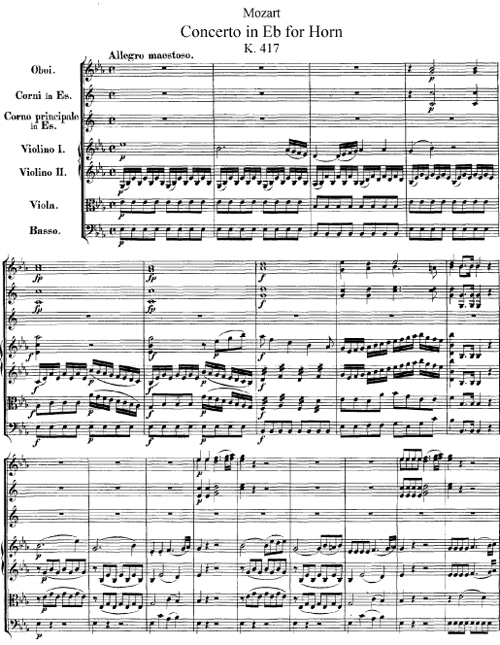Between 1783 and 1791 Mozart wrote four horn concertos and a horn quintet. All of these works were dedicated to one person – Joseph Leutgeb. Leutgeb was an acclaimed performer and one of Mozart’s closest friends in Vienna. Indeed, their friendship was so close that it enabled Mozart to take the liberty of inscribing on the title page of the concerto: “Mozart takes pity on Leutgeb, ass, ox, and simpleton, at Vienna, March 27, 1783.”
Typically childish Mozartean cynicism aside, all the four concertos long ago formed an important part of the horn repertoire and even today continue to challenge even the most celebrated masters of the instrument. The first movement of the concerto is a sonata allegro based on two contrasting themes. The first theme has a march-like character and solid tonal plan – in contrast to the second “female” theme with its singing quality. A new episode (B minor) introduced in the development section deserves special attention.
The second movement is a peaceful Andante with beautiful cantilenas in the solo part. These arresting melodies must have been a perfect match to Leutgeb’s famous singing tone on the horn. The last movement is a rondo (ABACABA) in the rhythm of a cheerful dance. An important element of this movement is the frequent use of trills, which – when the concerto was written – created tremendous difficulty for the performer.
Concerto for Horn and Orchestra No. 2 in Eb Major
K. 417
By Wolfgang Amadeus Mozart






